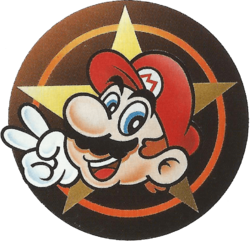(Summary, Infobox, Catagorizing) |
No edit summary |
||
| Line 15: | Line 15: | ||
|followed by=[[Super Mario Bros. 3]] | |followed by=[[Super Mario Bros. 3]] | ||
}} | }} | ||
{{wikipedia|Super Mario Bros. 2 | {{wikipedia}} | ||
[[Image:Super Mario Bros. 2 title screen.jpg|thumb|left|150px|''Super Mario Bros. 2'' title screen.]] | |||
'''''Super Mario Bros. 2''''' is a [[platform|platforming]] video game developed and published by [[Nintendo]] for the [[Nintendo Entertainment System]] video game console. It was released in North America in October [[1988]], in Europe on [[April 28]], [[1989]] and in Japan on [[July 14]], [[1992]]. | '''''Super Mario Bros. 2''''' is a [[platform|platforming]] video game developed and published by [[Nintendo]] for the [[Nintendo Entertainment System]] video game console. It was released in North America in October [[1988]], in Europe on [[April 28]], [[1989]] and in Japan on [[July 14]], [[1992]]. | ||
Revision as of 03:09, 4 March 2007
Template:All Game Nav Template:Infobox
Super Mario Bros. 2 is a platforming video game developed and published by Nintendo for the Nintendo Entertainment System video game console. It was released in North America in October 1988, in Europe on April 28, 1989 and in Japan on July 14, 1992.
Super Mario Bros. 2 did not begin life as a Super Mario Bros. title; it is a remake of the Japanese Famicom Disk System title Yume Kōjō: Doki Doki Panic. Nintendo's own sequel to Super Mario Bros. was released in Japan as Super Mario Bros. 2 in 1986. However, because of that game's extreme difficulty and its close similarity to the original game, Nintendo decided not to release it in the United States, instead releasing Yume Kōjō: Doki Doki Panic with Mario characters. Japan later saw the modified release under the title of Super Mario USA.
Because it was not originally a Mario title, this game differs greatly from the original Super Mario Bros. However, despite its status as the black sheep of the series, many elements from Super Mario Bros. 2 have become part of the Mario series canon and the repertoire of recurring elements. The game also sold well in its own right and was critically acclaimed at the time.

